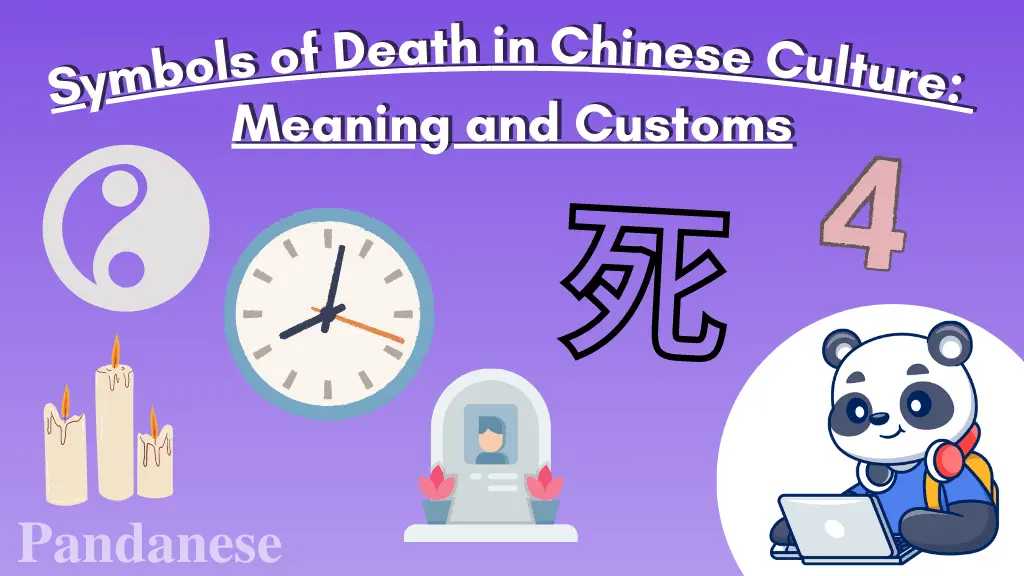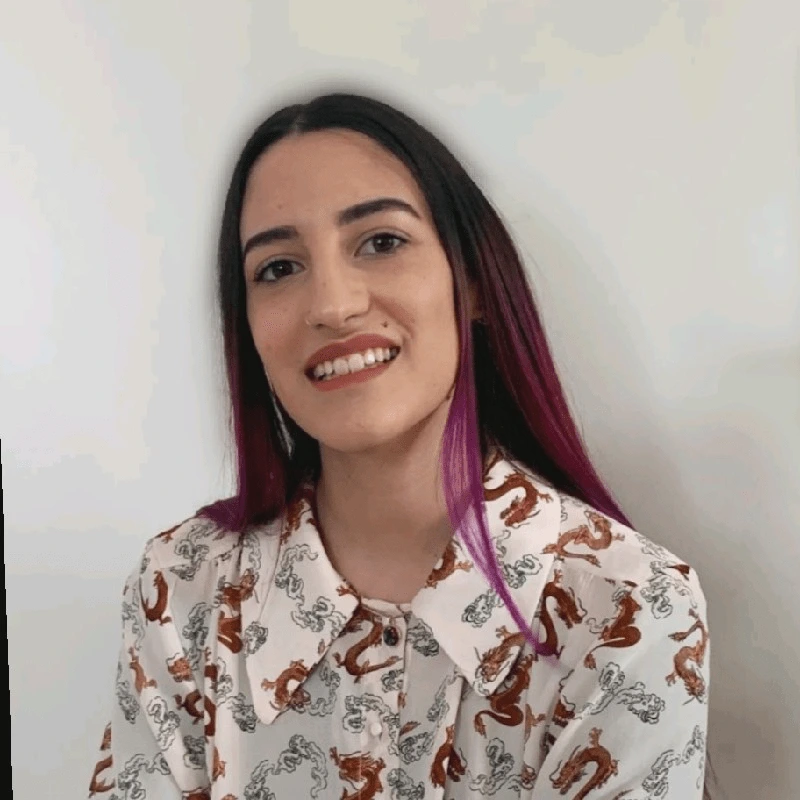
Symbols of Death in Chinese Culture: Meaning and Customs
Death is an inescapable reality that represents change. It carries profound significance within Chinese culture.
In this article, you'll learn more about death in Chinese culture and explore the symbolic representations and Chinese characters associated with this subject. We'll also talk about some superstitions linked to the concept of death.
The concept of death in Chinese philosophy
Taoism, Confucianism, and Buddhism are the three main religions and philosophies that helped develop China's history.
Very briefly, Taoism emphasizes man's connection to a vital and natural force that characterizes the entire cosmos, Confucianism focuses on moral conduct and behavior ethics, and Buddhism focuses on the rituals of spiritual life.
Past ancestor worship
Even before the rise of these three philosophies, ancestor worship was present in China, highlighting the importance the Chinese people have always attached to the concept of family.
Proving how much this ancient practice still survives today, Chinese people still generally want to be buried near their loved ones, such as expats often returning to their homeland once they reach old age or even want to die at home.

Praying at a Chinese temple
The belief that ancestors' spirits can positively or negatively influence the lives of one's descendants also survives to this day.*
*Note: This is a general statement. Not all Chinese believe in or practice ancestor worship, but the practice still survives today, especially in rural areas.
Death in Taoism
The central concept of Taoism, the Dao, is an intrinsic force in the universe and represents a continuous flow of nonbeing and being, destruction, and creation. Death is part of a continuous and unstoppable cycle and should be embraced as much as life.
The following quote by Zhuangzi well explains this cycle:
“Zhuangzi's wife died. When Huizu went to convey his condolences, he found Zhuangzi sitting with his legs sprawled out, pounding on a tub and singing. "You lived with her, she brought up your children and grew old," said Huizu. "It should be enough simply not to weep at her death. But pounding on a tub and singing - this is going too far, isn't it?"
Zhuangzi said, "You're wrong. When she first died, do you think I didn't grieve like anyone else? But I looked back to her beginning and the time before she was born. Not only the time before she was born, but the time before she had a body. Not only the time before she had a body, but the time before she had a spirit. In the midst of the jumble of wonder and mystery a change took place and she had a spirit. Another change and she had a body. Another change and she was born. Now there's been another change and she's dead. It's just like the progression of the four seasons, spring, summer, fall, winter.
"Now she's going to lie down peacefully in a vast room. If I were to follow after her bawling and sobbing, it would show that I don't understand anything about fate. So I stopped.”
Another good quote to understand the concept of death comes from chapter 16 of Laozi Daodeching:
"Empty yourself. Be calm. The ten thousand things come and go. Just watch them. All things return to the Source, where there is stillness. To return to the Source is to recover what is permanent. Knowing what is permanent: enlightenment. Not knowing what is permanent: disaster. Knowing what is permanent opens the mind. Open mind, open heart. Open heart, magnanimity. Magnanimity, a virtue of queens and kings. A true queen or king lives in accord with Nature. To live in accord with Nature is to find the Tao. Following the Tao makes death harmless."
Human life, for Taoists, is part of the eternal cycle to which the entire cosmos is subjected: death is a return to the original balance, to the Tao itself, the origin of all things. At the same time, however, Taoism supports self-cultivation techniques with practices such as feng shui and taijiquan to preserve health and extend earthly life.
Death in Confucianism
Confucianism, a philosophy with a much more concrete approach, focuses on the norms and rituals that govern human relations.
In Confucianism, death is approached with a focus on maintaining proper relationships, fulfilling social roles, and cultivating moral character. Death is thus treated from the ritual point of view: Confucianism prescribes ancestor worship as an expression of filial piety (孝—xiào) and respect for rituals (礼—lǐ.)
Additionally, Confucianism emphasizes rituals and mourning to express grief and pay respects to the deceased. The philosophy views life as a continuum, emphasizing the importance of transmitting values and traditions from ancestors to descendants.
Death in Buddhism
Buddhists consider death as an important transition rather than an end. The understanding of death is rooted in the Buddhist concept of impermanence, which states that all things are subject to change and ultimately cease to exist in their current form.
Death marks the time of rebirth and reincarnation. For this reason, it's a very important moment, and deaths are usually followed by rituals that involve offering incense, prayers, and performing meritorious acts on behalf of the deceased. These rituals aim to provide spiritual support, generate positive karma, and facilitate a smooth transition for the departed soul.
The ultimate goal is to help the departed soul reach a higher state of existence and be freed from the cycle of birth and death.
Chinese funeral rites
Chinese culture assigns a very important role to the dead ancestor's soul, which protects and brings good fortune to the family. For this purpose, the task of the descendants has always been to pay homage to it through sacrifices and plenty of attention.
In China, people often use the term 礼义之邦—lǐ yí zhī bāng (literally meaning "Homeland of Rite") to talk about their country.
This term gives a good idea of how strong the attachment is in Chinese tradition to ritual aspects, even funeral ones. Indeed, ritual is one of the most important aspects and regulates social, political, and family relations.

Chinese rural funeral customs, sohu
Chinese funerals vary depending on the individual for whom it is celebrated; it differs according to the cause of death, marital status, age, and social position.
Young people, for example, typically enjoy less respect than the elderly. Family members traditionally wear different colored clothes according to the degree of closeness.
The closest family members wear white colored clothes. Red, a color traditionally associated with weddings, is absolutely forbidden. Red lanterns also give way to white-colored ones.
During the burial, family members throw some earth on the grave and, at the same time, pick up some of it to keep in an incense container and take home. At the end of the funeral, all clothes are burned to avoid the misfortunes of death.
In the city, there is a preference for the cremation rite, as opposed to the countryside, where they prefer the traditional funeral rite.
What are the superstitions about death in China?
Chinese people are among the most superstitious in the world, and this is especially true with the subject of death. Death is a taboo subject, which they avoid talking about to avoid bad luck.
Number 4
Death superstitions is reflected in everyday life. The chinese number 4 is considered an unlucky number because the word for "four" (四 sì) sounds like the word meaning "death" (死 sǐ.)
For this reason, 4 is not present as a floor number in Chinese elevators and is generally avoided. Another example is when looking for a new house, Chinese people tend to avoid houses with the number 4 in the address.
The same concept applies to number 14, because 1 and 4, when pronounced as individual digits (yao si), resemble the ominous words "要死" (you must die).
Clocks
In Chinese culture, clocks are commonly associated with measuring time and are connected to mortality. Giving a clock as a gift can be seen as a reminder of the limited time one has in life, which is generally considered an inauspicious message.
Furthermore, the Chinese phrase meaning "gifting a clock" 送钟—sòng zhōng) sounds just like 送终—sòng zhōng, meaning "to be with someone in his/her last moments."
Due to this linguistic association, presenting someone with a clock is associated with bad luck.
Cicada
However, there are also positive symbols associated with death. The cicada (知了—zhīliǎo) is, in Chinese tradition, associated with the cycle of life and death and with the concept of rebirth found in the Buddhist tradition.
Just as the cicada sheds its skin and gets a new one, a person's soul can be reborn when a person dies.

A cicada shedding its skin
In the Taoist tradition, the cicada is also a symbol of transcendence and spiritual growth and represents the cyclical nature of the cosmos.
The Chinese character for "death" (死—sǐ)
The Chinese character for death, 死—sǐ, is one of the most ancient Chinese words: it was first found on oracle bones. It is a pictographic character that represents a person kneeling toward the remains of a deceased person.
Can you see it?

Chinese pictograph for character 死 by Sohu
Now look at the evolution of the character:

Evolution of 死 character by inews.ifeng
Hun and Po
According to Chinese tradition, Death and Life are two expressions of the two opposing but codependent forces that flow in everything, the Yin and Yang.
In particular, Taoists believe two forces are inside them: hun is a yang force, while po is a Yin force.
Let's look at these two Chinese words and their meaning in more detail:
Hun

Chinese character hun: 魂 by Medicina Cinese News
If we look at the Chinese character for 魂—hun, we immediately have a very precise indication of its meaning: the right-hand component (鬼—gui) means "ghost, spirit," while the left-hand part (云—yun) means "cloud."
So, hun has something to do with ethereal, light, related to yang, projected toward what is outside of us.
Po

Chinese character po: 魄, Medicina Cinese News
However, if we look at the character 魄—po, we notice that the left-hand side (bai 白) means "white" and refers to the color of bones.
Po is thus related to our material structure, internal and yin, our physical component: bones are the last to disappear after our death.
Frequently asked questions
What is the Chinese character for death?
The Chinese character for death is 死 (sǐ)
What is po and hun in Chinese?
In Chinese culture, "po" and "hun" are believed to be two aspects of the soul.
"Po" refers to the earthly and physical soul associated with the body, while "hun" represents the ethereal and spiritual soul associated with the consciousness. The concept of "po" and "hun" is often discussed in relation to Chinese beliefs about death, the afterlife, and the journey of the soul.
In summary
Understanding these aspects provides insights into Chinese perspectives on death and the afterlife. Overall, death in Chinese culture is a subject intertwined with rich traditions, symbolism, and beliefs that shape the way it is approached and understood.
See you in the next article!
Elisa Felici has been studying Chinese since 2014. She started her language-learning journey at Italian universities and lived in Beijing while attending Beijing’s Confucius Institute. Elisa passed HSK 4 and 5 and finally, in 2020, HSK 6. She now has a Master’s degree in translation and interpreting and has experience not only as a language learner but also as a Chinese teacher and translator.
The easiest way to learn Chinese & build vocabulary

